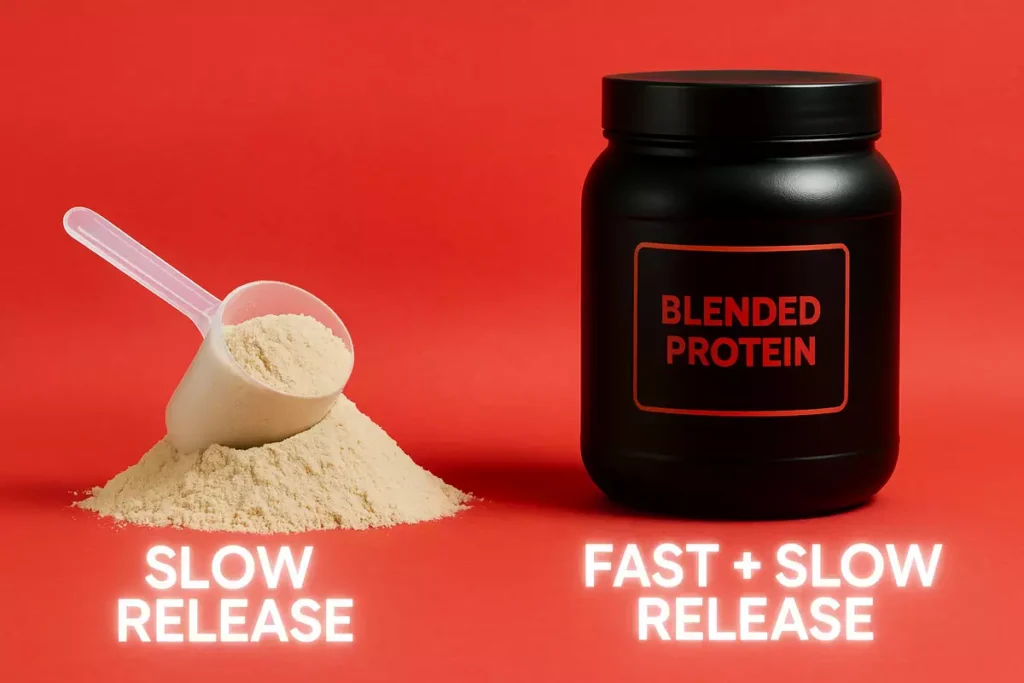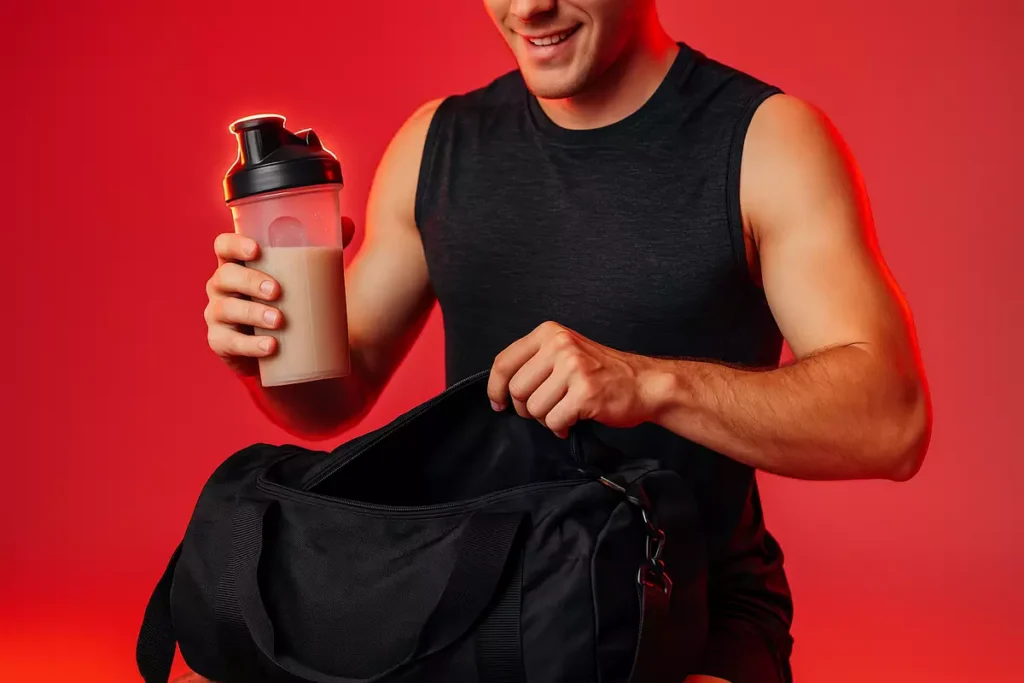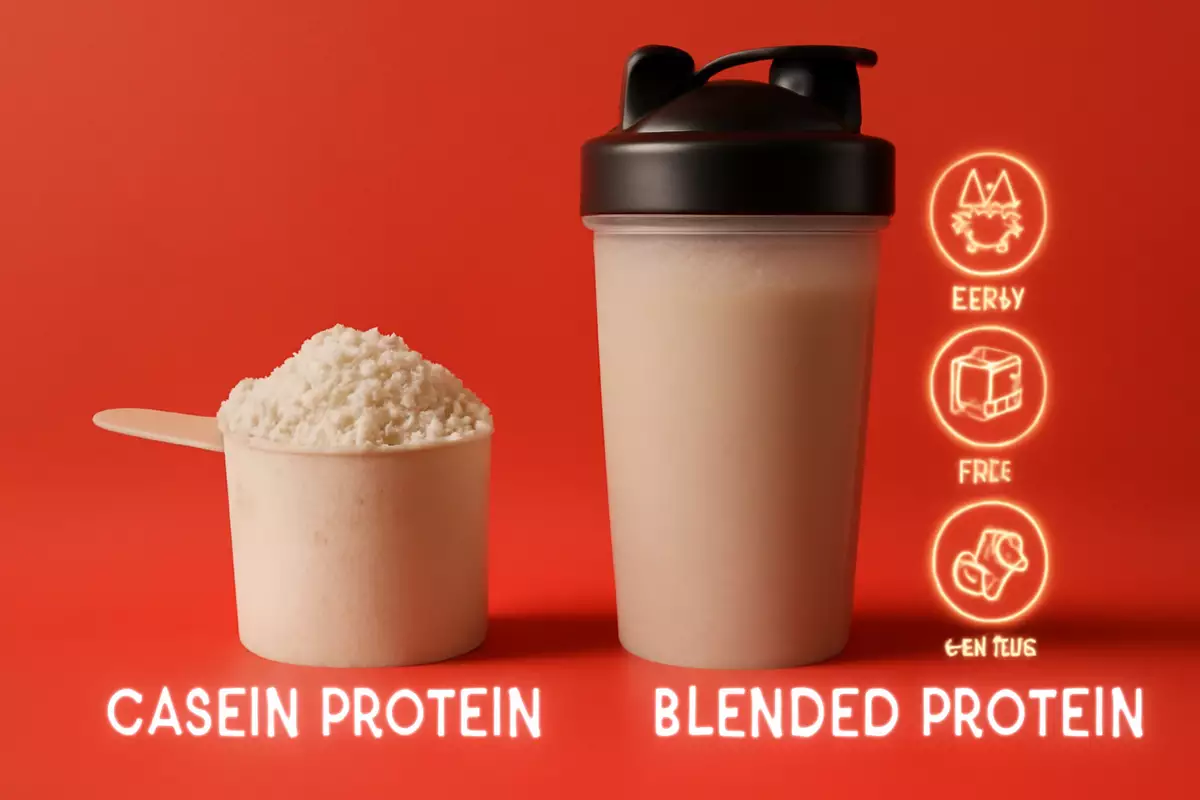Choosing between casein protein and blended protein powders can feel confusing. Both promise muscle recovery, growth, and performance.
The truth is, each has unique benefits. Casein offers slow-release recovery, while blends deliver all-in-one convenience.
As a coach and athlete, I’ve tested both and guided clients through them. Let’s break down which option truly fits your goals.
Table of contents
Quick Answer – Which Is Better?
If you want a straightforward answer, here it is:
- Casein protein is excellent when you need slow, steady recovery and appetite control, especially overnight.
- Blended protein powders are more versatile, giving you fast and slow digestion in one scoop, which makes them practical for busy athletes.
In my experience as a coach and athlete, I often use both depending on the goal.
What Is Casein Protein?

Casein is a slow-digesting milk protein. Once you drink it, your body releases amino acids gradually for several hours.
That’s why athletes often use it before bed—to repair muscles while sleeping. It’s also a popular choice for those looking to use casein as a meal replacement or who want better overnight muscle recovery with micellar casein.
When I was cutting down for summer, a nightly casein shake kept me from raiding the fridge at midnight.
One of my clients, David (32, office worker and part-time bodybuilder), also loved it because it curbed his late-night hunger.
What Are Blended Protein Powders?
Blended proteins usually mix whey, casein, and sometimes egg or plant proteins.
The idea is to give you the best of both worlds—quick amino acid delivery right after training and sustained release for hours after.
For me, blended protein came in handy during early morning coaching. I’d have a shake at 6 AM and stay fueled until late morning without needing another meal.
One of my soccer-playing clients, Aria (25), also preferred blends since she needed both fast recovery after games and long-lasting support overnight.
Casein vs Blended Protein – Key Differences

- Digestion Speed
- Casein: Slow and steady.
- Blended: Mix of fast (whey) and slow (casein/egg/plant).
- Amino Acid Profile
- Both deliver complete amino acid profiles, but blends often add variety.
- You can read more in my guide on casein vs soy protein digestion.
- Satiety & Recovery
- Casein shines for hunger control.
- Blends shine for all-day muscle support.
- Practical Use
- Casein: Best at night or during fasting windows.
- Blends: Best when you can’t eat often, like traveling or long work shifts.
When to Choose Casein
Go with casein if you:
- Struggle with late-night cravings
- Need overnight recovery during intense training
- Want a long-lasting protein source when meals are spaced apart
I personally lean on casein more during fat loss phases, when hunger control is key.
Female athletes also benefit greatly—many of my clients use it for body shaping and recovery, as I explain in casein protein benefits for women.
If you’re consistent, you’ll usually notice progress in a few weeks. Check my breakdown on how long it takes to see results with casein.
When to Choose Blended Protein

Choose blends if you:
- Want all-in-one convenience
- Travel often or can’t meal-prep
- Need both fast recovery and long-term support
When I traveled for a week with limited food options, blended protein was my safety net.
It gave me quick post-workout recovery and kept me fueled for hours when I couldn’t find clean meals.
Trainer’s Final Take
From my years of training and coaching, I can confidently say: both casein and blended proteins have their place.
- If your main struggle is hunger at night or you want a slow-release protein, go with casein.
- If you’re a busy athlete, frequent traveler, or someone who wants one powder to cover multiple needs, blended protein is the smarter choice.
One of my female clients, Maria, found casein too heavy on her stomach, so we switched her to a blended option and she felt better.
That’s a reminder—personal preference and digestion matter as much as the science.
If you’re considering casein, I recommend looking into top-rated casein proteins for bodybuilding and also debunking the most common casein myths before buying.
At the end of the day, the best protein is the one that fits your lifestyle, training phase, and body’s response.



Leave a Reply